The municipality of Petit-Goâve, where the vast majority of victims are concentrated, had requested assistance from Prime Minister Alix Didier Fils-Aimé to prepare for possible damage from the La Digue River. Local officials say they received no response from the government
More than two months before Hurricane Melissa struck, local authorities in Petit-Goâve had tried to warn the government of Alix Didier Fils-Aimé about the dangers posed by the La Digue River and two other waterways in the event of flooding.
An official from the administration of the commune’s twelfth section, contacted by AyiboPost, lamented that no response or intervention was made to prevent the damage, despite two letters sent to the government in August and September 2025 in the middle of the hurricane season.
The heavy rains brought by the hurricane devastated several towns in the South and West, particularly Petit-Goâve, where nearly thirty people—most of them children—were killed when the La Digue River overflowed.
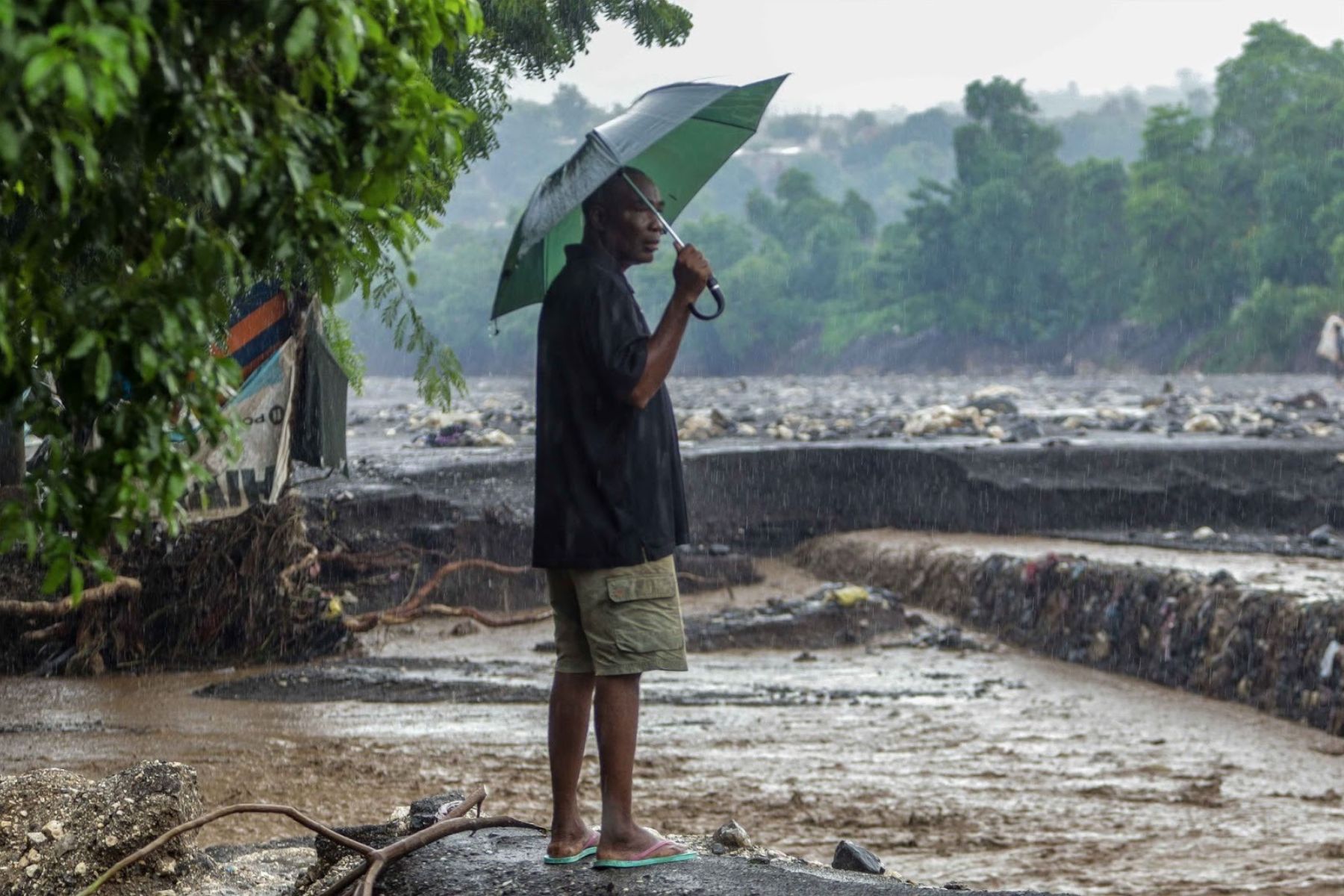
A man watches as the La Digue River overflows, washing away part of its bank. Friday, October 31, 2025. | © Jean Feguens Regala / AyiboPost
Significant property damage was also recorded in this coastal town in the West department, according to testimonies collected by AyiboPost from about a dozen victims.
The first letter sent to the government by the Administrative Council of Petit-Goâve’s Twelfth Communal Section, dated August 2025 and shared with AyiboPost, requested “urgent interventions” on three waterways, including the La Digue River.
Acknowledged on August 11 (a copy had been sent to the Ministries of the Interior, Finance, Environment, Agriculture, and Public Works), the letter noted that previous floods from these rivers had already caused “serious flooding,” resulting in losses for residents and disrupting traffic along National Road #2.
With no response from the government, a second letter was sent to the Prime Minister in September, calling for “an important meeting” between the local administration and the national authorities.
“This approach aims to present the critical situation of the section following numerous letters already sent to your ministry,” the second letter reads.
The coordinator of Petit-Goâve’s Twelfth Section, Nosalito Soliman, now says these letters are “proof that I tried to prevent what happened.”
For years, the La Digue River—one of the region’s main waterways—has caused property damage and loss of life during floods, partly because its riverbed, used by residents as a dumping ground, is not maintained.
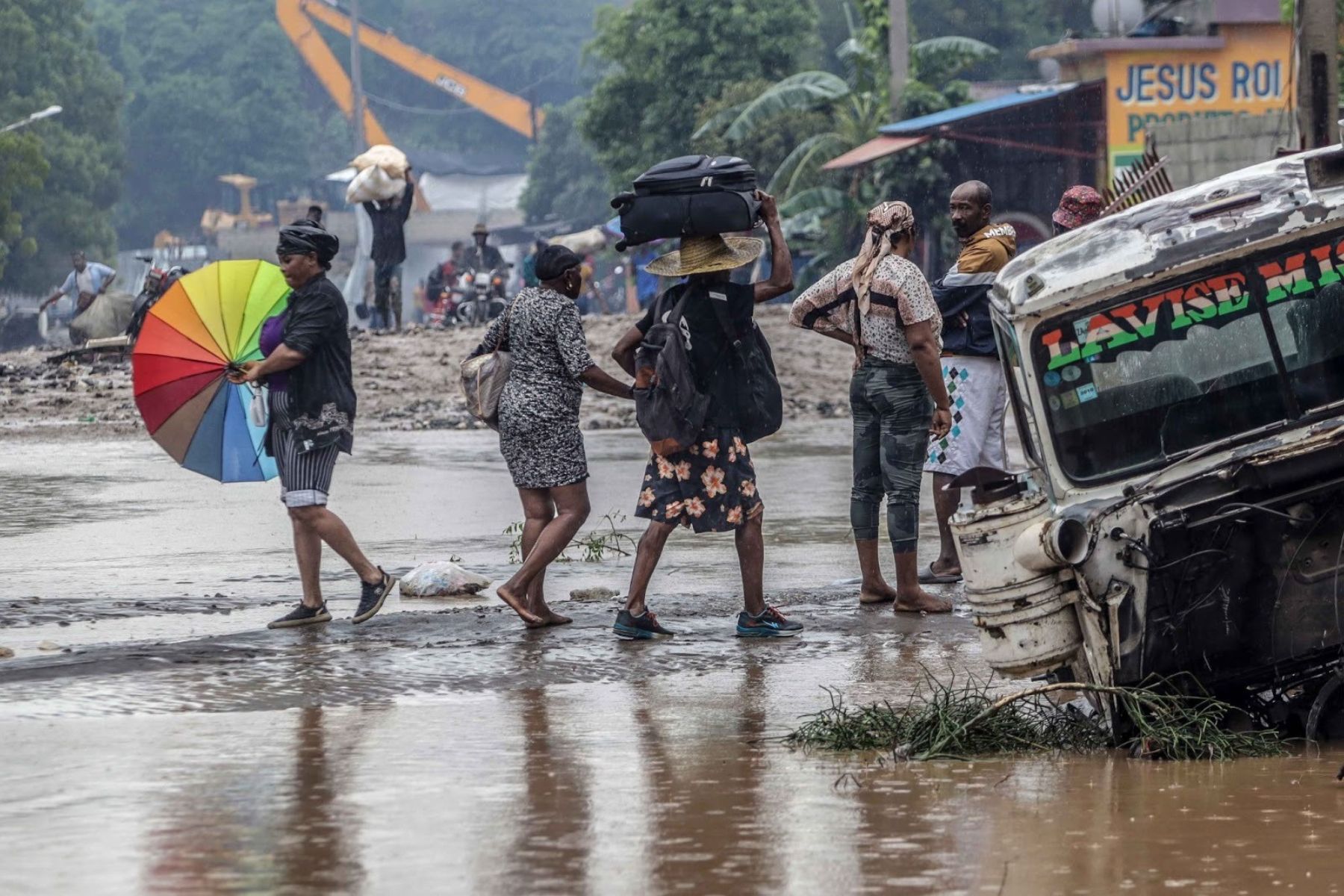
Residents attempt to cross National Highway 2, flooded by the river, near Petit-Goâve. Friday, October 31, 2025. | © Jean Feguens Regala / AyiboPost
In an interview with AyiboPost, Franck Célestin, the director of the Ministry of Public Works, Transport, and Communications (MTPTC) in Petit-Goâve, admitted that “the requests were indeed on the table.”
According to him, “It’s possible that government leaders wanted to act but faced constraints that prevented them from addressing the issue.”
Contacted by AyiboPost, Ronald Louis, head of Civil Protection in Petit-Goâve, believes that “if the river had been dredged, what happened wouldn’t have occurred, because its bed was like a full bowl that overflowed.”
AyiboPost was unable to reach the Haitian government spokesperson before publication.
The Category 5 hurricane struck Jamaica on October 28, 2025, with winds nearing 300 km/h.
Haiti, spared from the eye of the storm, endured nearly a week of intense rain, leaving 43 dead and about fifteen missing, according to a preliminary report.
Yet the country recorded more victims than Jamaica, where the powerful hurricane—with record winds—made landfall and killed 32 people.

Number of hurricane-related deaths in Jamaica, Cuba, Haiti, and the Dominican Republic.
Across the border in the Dominican Republic, local media reported a single death.
In Cuba, where Melissa also made landfall after Jamaica, no deaths were reported.
According to the latest partial tally from the Permanent Secretariat for Risk and Disaster Management, which operates under the Civil Protection Directorate, 25 deaths were recorded in the commune of Petit-Goâve alone—nearly 60% of all fatalities in Haiti.
The numbers for Petit-Goâve may even be underestimated, said a local official contacted by AyiboPost, who cited 27 deaths.
In this commune, several areas—including Nan Zannanna, Momance, La Digue, Nan Bannann, and parts of the city center—were hit hard.
Floodwaters destroyed gardens and swept away livestock. The national road leading to Léogâne was cut off.
Half a dozen Petit-Goâve residents interviewed by AyiboPost said they were caught by surprise in their homes at night when the floods struck.
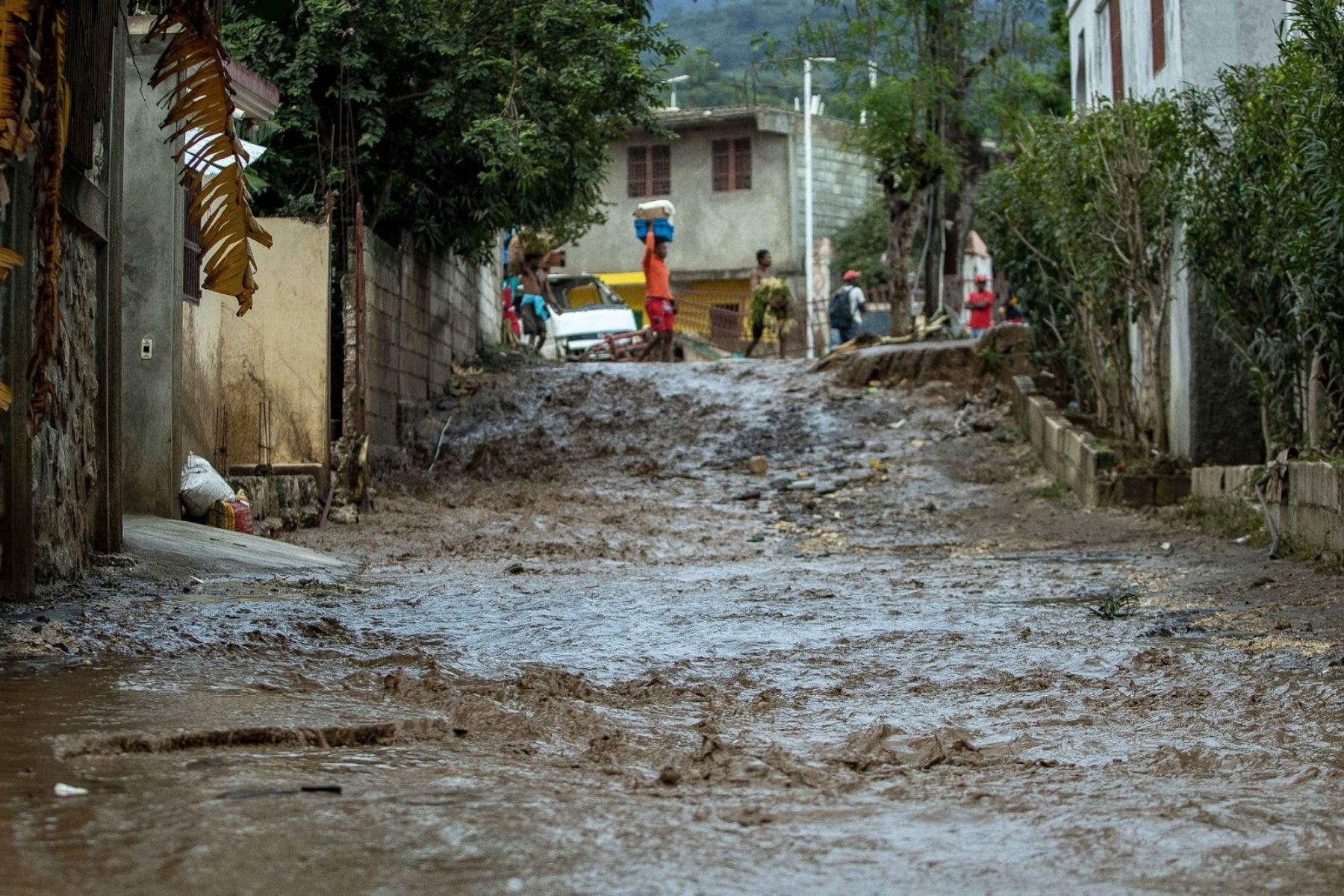
Overflowing waters from the La Digue River in a cul-de-sac on National Route 2, flooding dozens of homes. Friday, October 31, 2025. | © Jean Feguens Regala / AyiboPost
Johnny, 40, lived in Morne Soldat. He was asleep when water began to pour into his house.
“Around 3 a.m., my cousin told me the La Digue River was flooding us, and when I stepped outside, I saw we were surrounded by water,” Johnny recalled.
During the tragedy, he survived but lost five family members, including his father.
Étienne, a teacher and resident of Petit-Goâve, described a night of terror in a city plunged into darkness.
“The river burst through in the middle of the night. I heard people screaming in the dark. Everyone was trying to flee in panic,” he said, adding that he knows a mother who lost all five of her children.
The river had already caused destruction in the community before, notably in the early 1990s.
Having lived in the area for thirty years, Étienne believes the authorities failed to take the necessary measures to protect residents, as people kept building houses along the riverbanks.
Swollen by recent rains, the river followed the same path it did thirty years ago when it last devastated the area, according to Étienne.
The Civil Protection Directorate was caught off guard.
Contacted by AyiboPost, Charles Paul Fleurimé, technical officer with Civil Protection, lamented the lack of resources available to his department to respond to emergencies.
“The local Civil Protection office had no supplies in stock,” he said.
Without basic tools like megaphones, some Civil Protection agents had to go door-to-door to alert residents of the Twelfth Section before Melissa’s arrival.
According to Fleurimé, the state failed to act despite warnings from locals five months before the hurricane.
In a single night of rain during the storm, 22 deaths were recorded.
“Most of the victims from the twelfth section lived on the riverbank, where it overflowed,” explained Fleurimé, noting that some houses were built just three meters from the water’s edge.
For his part, Ronald Louis said he faced “resistance” from residents when Civil Protection volunteers urged them to evacuate.
“During a sensitization session the day before the hurricane, one man even hit one of our agents, saying he wanted food, not words,” the official added.
But for Étienne, who lives about twenty minutes from the La Digue River, residents’ refusal was “understandable.”
“It was only when the hurricane hit that authorities came to ask people to evacuate—without any organized plan for how to do so,” he told AyiboPost.
By Wednesday morning, October 29, the morgue at Petit-Goâve’s Notre-Dame Hospital already held about ten bodies, most of them children.
The hospital, which played a central role in post-hurricane rescue efforts, was also treating dozens of injured people.
“It’s heartbreaking to witness people’s helplessness and see the bodies of those children,” said the hospital’s medical director, Fred Jasmin, in an interview with AyiboPost.
In Petit-Goâve, the La Digue River is one of the main waterways known to cause flooding in areas such as Fon Fabre, Morne Soldat, Rue Benoît, La Hatte, and parts of the city center.
Stone quarrying upstream, combined with the lack of dredging and reinforcement of the riverbanks, significantly worsens its impact during floods.
A 2012 natural hazard assessment report had already warned about the risks posed by poor management of the river to nearby communities.
“During heavy rains, the water would rise above the gabion walls,” said Fleurimé, the Civil Protection technical officer in the Twelfth Section of Petit-Goâve.
During the flood caused by Hurricane Melissa, the La Digue River—its bed clogged with sediment—backed up against the bridge spanning it, overflowing into several neighborhoods.
Three days after the hurricane, Civil Protection still lacked basic tools like shovels, rakes, and wheelbarrows to clear debris from destroyed homes, according to the agency.
Recent Civil Protection counts show about a hundred houses destroyed across three communal sections, nearly 1,600 others flooded, and around forty families displaced.
However, “at the community level, nothing concrete has been done yet,” said Ronald Louis, noting that priority needs are still being assessed.
Fritznel Chéry, mayor of Roche-à-Bateau and president of the Association of Southern Mayors (AMSUD), said that the towns in the Grand Sud had been neglected by the authorities long before the hurricane.
In 2016, this region had already been devastated by Hurricane Matthew.
“No preparation was made before Hurricane Melissa, and each town hall had to organize evacuations and awareness campaigns on its own,” Chéry told AyiboPost.
In Roche-à-Bateau, about twenty seaside houses were destroyed. In Les Chardonnières, a road was cut off, and many coastal areas in the South remain inaccessible.
On October 31, the government declared a state of emergency in six departments—including the Grand Sud and the West—to “address the disastrous consequences of the hurricane.”
On November 3, Petit-Goâve’s deputy interim agent, Marthe Noël, told AyiboPost that a few heavy machines had arrived in town and that a meeting was held between local authorities and state representatives to plan funerals for the victims.
But most of the equipment arrived broken down, said Civil Protection head Ronald Louis, who also mentioned a lack of dump trucks to carry debris.
“Every year,” he explained, “we report the urgent need for heavy equipment in the commune to dredge rivers before hurricane season. But there’s never any follow-up.”
Some areas of Petit-Goâve remain at risk of flooding even after Hurricane Melissa.
Étienne reported that just three days ago, heavy rain caused another river in the Ti Ginen area to rise, nearly sweeping several people away.
By : Jérôme Wendy Norestyl, Jean Feguens Regala, Wethzer Piercin
Cover : Men and woman cross a flooded dead end, attempting to evacuate the twelfth section of Petit-Goâve, affected by the hurricane. Friday, October 31, 2025. | © Jean Feguens Regala / AyiboPost
► AyiboPost is dedicated to providing accurate information. If you notice any mistake or error, please inform us at the following address : hey@ayibopost.com
Keep in touch with AyiboPost via:
► Our channel Telegram : Click here
►Notre Channel WhatsApp : Click here
►Our Community WhatsApp : Click here



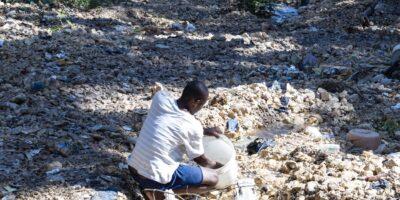


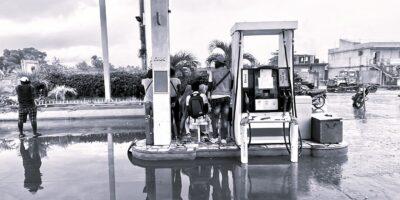
Comments